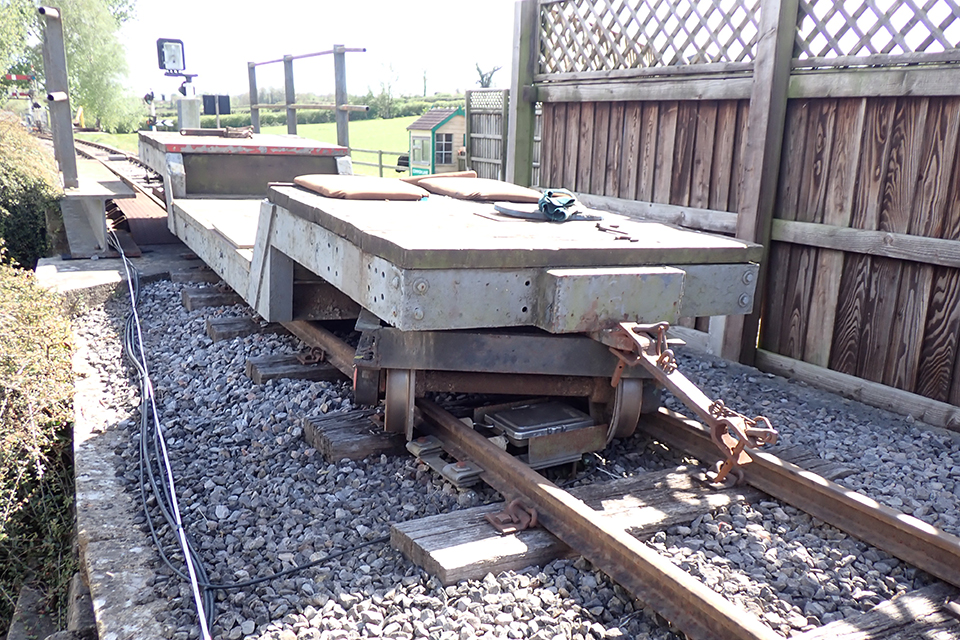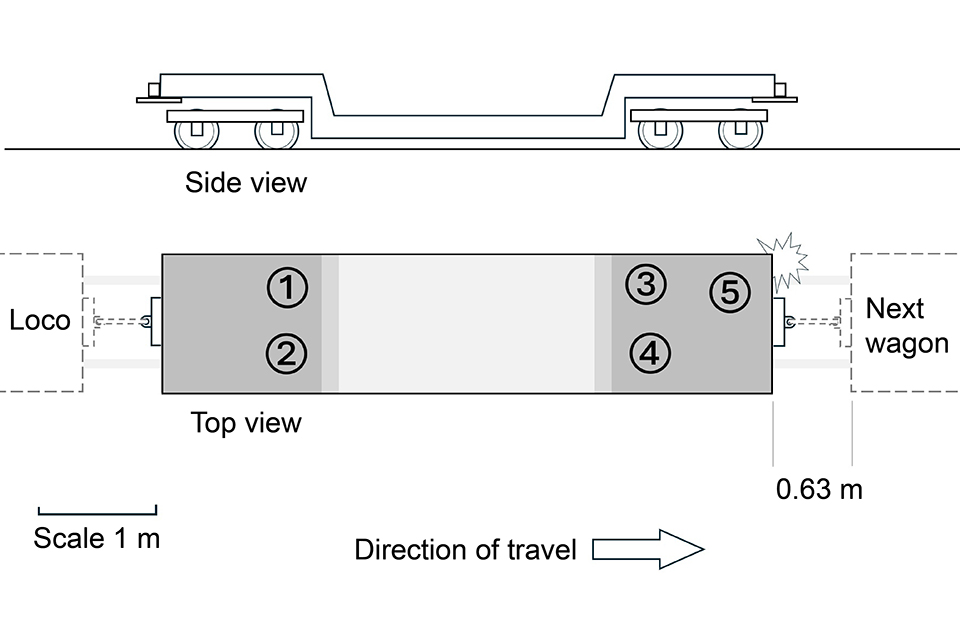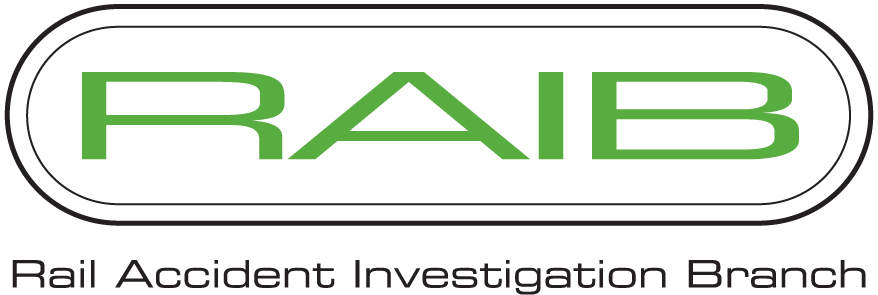Person struck by train on Gartell Light Railway, Somerset, 17 April 2025
Published 22 July 2025
1. Important safety messages
This accident demonstrates the importance to heritage railways of:
- using appropriate vehicles to transport staff
- staff not boarding or alighting from moving trains in circumstances where it is prohibited by rules and operating procedures
- staff continuing to work in accordance with rules and operating procedures when the railway is not open to the public.
The accident is also a reminder that, regardless of the size of the vehicles or the track gauge involved, there is the potential for serious injury when working with trains.
2. Summary of the accident
At 09:35 on Thursday 17 April 2025, a volunteer member of staff was struck and seriously injured as they alighted from a wagon forming part of a works train near to Common Lane level crossing on the Gartell Light Railway. The railway was not open to the public when the accident occurred.
3. Description of the infrastructure
The Gartell Light Railway is a privately-run narrow-gauge railway in the heritage sector, which opened to the public in 1991. It is staffed by the railway’s volunteer members and operates a mixture of steam and diesel locomotives hauling passenger and works trains.
Construction of the 0.61 metre (2-foot) narrow-gauge track began in the early 1980s. The railway is 0.75 miles (1.2 km) long, with the depot and main station at Common Lane, near the north end of the line.
When the railway is operating, Common Lane level crossing is protected by road traffic signals (‘wig-wags’). On non-operating days, gates equipped with stop boards and lamps are closed across the railway. These gates are opened by staff when a train is required to pass over the crossing.​ There is signalling equipment fitted between the rails at the accident location.

Incident wagon showing derailed leading bogie and signalling equipment fitted between the rails.
4. Cause of the accident
The accident occurred because the volunteer alighted from a moving train.
The works train involved consisted of a small diesel locomotive and three wagons. At the time of the accident, the train was being propelled towards the site of work with the locomotive at the rear. Witnesses stated that the train was moving slowly, slowing down, and about to stop.
The two leading wagons carried materials, tools and equipment for a maintenance task. A wagon with a lowered centre section, known as a well wagon, was nearest the locomotive. This wagon was regularly used to carry volunteer staff. During this journey it conveyed five people who were all seated.
As the train was preparing to depart from Common Lane sidings, four volunteers were seated on the well wagon on cushioned seat pads, two facing forwards and two facing backwards. When another volunteer arrived, they were briefed on the work plan and nominated to open the level crossing gates when the train arrived at Common Lane crossing.
This person who was later injured joined the train and sat on the raised end section of the well wagon furthest from the locomotive. The seating layout meant that the two closest witnesses had their backs to the injured person. The two witnesses facing towards the injured person had their view blocked by their colleagues sitting opposite them. No witness reported directly observing the accident.
As the train approached the crossing and slowed down, the volunteer seated on the leading end of the well wagon, shown as position 5 in the diagram below, alighted from the train to open the gate. As they did so, their boot caught on either a track fixing or signalling equipment, dragging their leg under the wagon’s leading left-hand wheel. When the other volunteers heard the injured person shout, they all immediately alighted and instructed the train driver to reverse to release the injured person’s leg. As the train did so, the leading bogie of the incident wagon fully derailed.
Operating rules are contained within the railway’s Rule Book. Within this, module G1 includes section 1.2 headed ‘Getting on and off rail vehicles’. Under this heading, the rule states: ‘You must not get off a moving rail vehicle’. As there is no qualification on this requirement as to train speed, it applies however slowly a train may be moving.

Diagram of well wagon showing seating positions. The injured person was in position 5.
5. Previous similar occurrences
A number of previous incidents where operating rules have not been correctly followed on heritage railways have been investigated by RAIB.
RAIB published a safety bulletin () into an accident which occurred on the Foxfield Light Railway, Staffordshire, in October 2010. During this accident, the guard of a demonstration freight train operating at Foxfield Colliery yard attempted to board the brake van of a slowly moving train. They slipped from the footstep and were dragged a few metres before releasing their hold on a handrail and falling. They suffered a fractured and dislocated shoulder as a result of the accident. The Rule Book of this railway stated that staff must ‘not board or alight from a moving vehicle and [must] prevent passengers from doing so’.
RAIB investigated an accident (RAIB report 04/2015) which occurred in May 2014 near to Loughborough Central station, on the Great Central Railway. During this accident an unstaffed train ran away for around 1.8 miles (2.9 km) before colliding with a set of unattended coaches. The railway was closed to the public when the accident occurred. During its investigation, RAIB found that managers at the railway had not detected the full extent of the unsafe and non-compliant practices present within possessions.

